1. Real-Time Insights from Data Feeds
AI systems can ingest live sports data streams and instantly highlight meaningful statistics or patterns for commentators. By parsing real-time feeds—such as player stats, play-by-play data, and sensor readings—AI provides immediate, data-backed observations during a game. This means commentary can go beyond generic remarks, offering viewers nuanced insights as soon as they become relevant. The result is a more informative broadcast that explains not just what is happening, but why, in the moment. Overall, real-time data integration helps deepen audience understanding of the unfolding action through timely analytic context.

Recent implementations demonstrate that AI-driven commentary can process and relay live data at a level comparable to human experts. For example, a 2025 study combined computer vision with a GPT-4 language model to generate real-time basketball commentary; the AI analyzed the video feed for events and produced narration whose phrasing was confirmed to be on par with actual broadcast commentary. Likewise, IBM’s generative AI system at the 2023 US Open ingested live scoring and stats to create instant highlight narrations, achieving a content overlap of about 82% with professional summaries (measured by ROUGE-L) while delivering a 15-fold speed improvement in production. These cases show that AI can handle the velocity and volume of live data, injecting fact-based insights into commentary in real time without lag.
2. Automated Event Detection
AI uses computer vision and machine learning to automatically detect key events in sports without human prompts. Algorithms can monitor video feeds to flag moments like goals, touchdowns, fouls, or substitutions the instant they occur. This allows commentary to stay perfectly in sync with the action, as the system doesn’t risk missing a subtle play or reacting late. By eliminating human reaction delay, AI ensures that significant events are immediately noted and described to the audience. In effect, automated event detection keeps commentary comprehensive and timely, heightening the responsiveness of live broadcasts.

Real-world deployments show that AI can register and narrate in-game events at a granularity and speed beyond human capability. In 2024, Amazon Web Services (AWS) partnered with the German Bundesliga to introduce an AI commentary system that analyzes over 1,600 distinct on-field actions per match (e.g. passes, shots, fouls) and generates descriptive commentary within seconds. The system leverages live event data to produce instantaneous multilingual updates for each significant moment. Similarly, research prototypes have used deep learning (e.g. YOLO object detection) to recognize events like ball possessions or goal attempts from video in real time. These implementations illustrate how AI-driven event detection can capture virtually every notable play and feed it into the commentary stream immediately, ensuring viewers never miss critical incidents as the game unfolds.
3. Contextual Storytelling
AI enhances sports commentary by weaving in historical and contextual narratives that enrich the game’s story. Natural Language Processing models can draw from vast databases of past matches, player biographies, season records, and more to provide background on the fly. As a result, commentary is not limited to the current play-by-play—it can reference a player’s career milestones, previous encounters between teams, or relevant historical moments. This deeper context gives viewers a greater appreciation of the game’s significance. By integrating statistical trends and storylines from the past, AI-driven commentary creates a more engaging narrative tapestry around the live action.

Industry applications illustrate AI’s capacity for rich, context-aware commentary. For example, IBM’s AI commentary system in 2023 combined real-time stats with an archive of over one million news articles, historical game data, and player information to produce narratives that blend facts with storytelling. During the U.S. Open tennis tournament, the AI not only described the points but also pulled in historical head-to-head records and personal milestones, enabled by its access to unstructured text sources and encyclopedic sports knowledge. Likewise, experimental systems have been trained on decades of sports data so they can, say, mention that a soccer player is nearing a club scoring record when they approach the goal. By leveraging these knowledge bases, AI ensures that commentary continuously enriches the live event with pertinent backstories and statistical context.
4. Emotionally Tuned Narration
Advanced AI models can adjust the tone and emotion of commentary to suit the moment, much like a human commentator modulating excitement or gravity. By analyzing the game context and even crowd sentiment, the AI can adopt an enthusiastic, animated style during crucial plays or victories, and a calm or somber tone in serious or unfortunate moments (such as injuries). This sentiment-aware narration makes the commentary feel more authentic and relatable to viewers. Rather than speaking in a flat, unvarying manner, the AI dynamically “acts” emotionally appropriate—celebratory for a last-second goal, or respectful and subdued when a player is hurt. Such tuning enhances the audience’s emotional connection to the game.

Research indicates that capturing the emotional dynamics of sports commentary is a recognized challenge and goal for AI. A 2024 benchmark study on video commentary generation notes that sports broadcasts feature “emotionally charged commentary,” highlighting the need for AI systems to replicate shifts in enthusiasm and tone. In practice, some AI commentary platforms already incorporate style presets that indirectly reflect emotional tone. For instance, an AWS live commentary system allows multiple “writing styles” from a formal sports journalist voice to a more excitable Gen-Z “bro” persona for the same play-by-play event. By choosing an upbeat style during a thrilling play or a measured style in a quiet moment, the AI mirrors human-like emotional modulation. Early user studies have also found that well-tuned AI responses can be perceived as empathetic and responsive in other domains, suggesting that with proper sentiment analysis and training, AI commentators can consistently hit the right emotional note in sports narratives.
5. Hyper-Personalization
AI enables commentary to be tailored to individual viewer preferences on the fly. Instead of a one-size-fits-all broadcast, an AI system can emphasize the elements each fan cares about most—focusing on a favorite player’s contributions, a preferred team’s strategy, or even integrating fantasy sports implications for the avid fantasy league user. This hyper-personalization means two people could watch the same game but hear slightly different commentary aligned with their interests. By learning user profiles or letting fans select their preferred focus, AI delivers a customized narrative. This increases engagement, as viewers receive a commentary experience uniquely relevant to them, highlighting the storylines and stats they value.

Early implementations have shown the feasibility of generating personalized sports content using AI. In 2024, researchers reported an AI system that was extended to create individualized commentary and news updates for ESPN Fantasy Football users. The generative model could adjust its output to cater to each fantasy player’s roster and interests—providing, for example, extra insight on how a live NFL game’s events impact that user’s fantasy team. In another case, AWS’s Bundesliga project noted that the AI could produce updates “tailored to personal preferences,” meaning fans might receive commentary in a preferred style or focusing on chosen players. A global consulting report likewise observed that generative AI is enabling “hyper-personalised fan engagement” in sports, using data on user behavior to drive content choices. These developments indicate that AI-driven commentary can be dynamically customized, turning broadcasts into a more interactive, personalized experience for each viewer.
6. Multilingual Commentaries
AI language models can generate high-quality sports commentary in multiple languages simultaneously, greatly expanding the reach of broadcasts. Instead of relying on separate human announcers for each language, one AI system can instantly translate or natively produce commentary in, say, English, Spanish, Mandarin, and more. This allows fans around the world to listen in their preferred language without delay. It also enables coverage of sports in regions or languages that previously lacked live commentary due to cost or logistics. By breaking language barriers in real time, multilingual AI commentary makes global events more inclusive and helps leagues grow international fan engagement through localized narration.

The deployment of generative AI in live sports has already demonstrated seamless multilingual commentary. In the German Bundesliga in 2024, an AWS-powered AI commentary solution produced real-time match updates in multiple languages in parallel. For a given play, the system could output a German description and an English description almost instantly, each crafted to sound fluent and natural. It even varied the style across languages (for example, a formal tone for one audience and a casual tone for another). Additionally, major tech providers have integrated live translation into their sports streaming platforms, using speech-to-text and machine translation to overlay broadcasts with captions in numerous languages. These advances prove that a single AI model can effectively serve commentary to diverse linguistic markets at once. As the translation quality of AI continues to improve, fans can expect real-time sports commentary in their native language with accuracy and colloquial ease, even for events taking place halfway across the world.
7. Injury and Performance Predictions
AI augments commentary with predictive insights about player health and performance trends. By analyzing data such as workload, biometric readings, and historical performance, AI models can alert viewers to signs of player fatigue or injury risk in real time. For example, the system might note that a star midfielder’s sprint speed has dropped and predict a possible injury or cramp, adding a cautionary comment to the broadcast. Similarly, AI can forecast performance dips (e.g. a shooter’s accuracy declining as they tire) or even simulate odds of injury given current exertion levels. Integrating these predictions into commentary gives fans a forward-looking perspective—helping them understand potential turning points before they happen. It turns the commentary into a blend of real-time analysis and prognostication, grounded in data patterns.
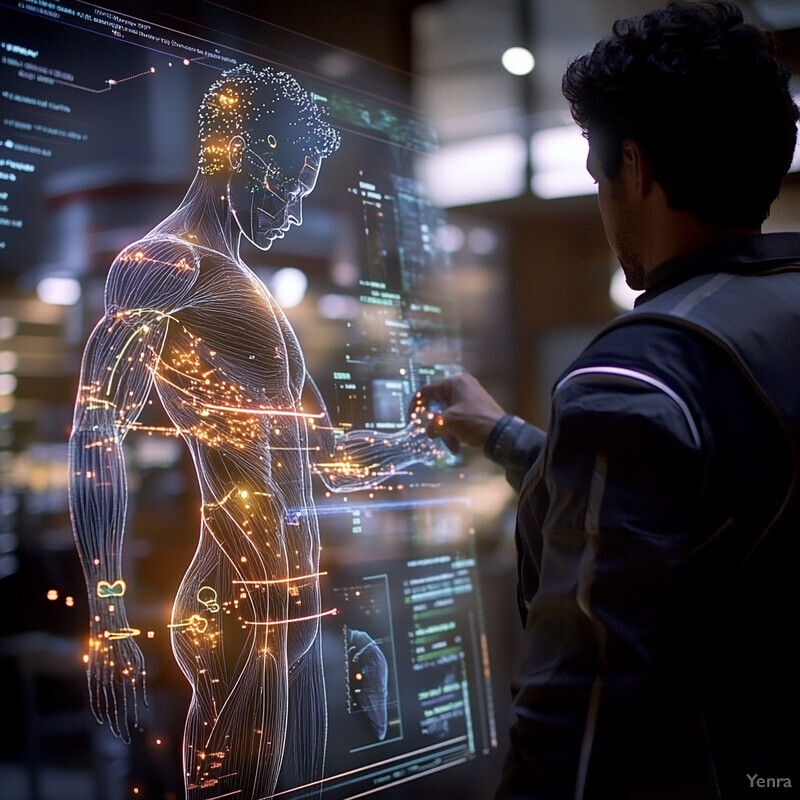
Sports science research underscores AI’s growing role in injury and fatigue prediction. A comprehensive 2024 review in Diagnostics found that machine learning models can analyze complex athlete datasets and generate reliable injury risk assessments, often processing real-time sensor data to flag heightened risk conditions. These AI models tailor predictions to individual athlete profiles, moving sports medicine toward proactive prevention rather than reactive treatment. In terms of performance fatigue, a 2024 study by Biró et al. demonstrated an AI approach to predict athletes’ fatigue levels from wearable IMU (inertial measurement unit) data, achieving significant correlations between the model’s fatigue predictions and actual observed performance declines on the field. The AI-driven system could effectively warn when a player was reaching exhaustion in line with drops in speed or output. In practice, such predictive outputs can be translated into commentary remarks (e.g., noting a player’s reduced work rate and suggesting they may soon be substituted due to fatigue). As teams adopt AI for monitoring, broadcasters can leverage those same insights to keep audiences informed about looming injury or performance issues before they visibly manifest.
8. Highlight Generation
After a game, AI can rapidly compile and even narrate highlight reels, ensuring fans quickly see the most important moments with commentary. This automation drastically reduces the turnaround time for post-game highlights and can scale to many games simultaneously. The AI system reviews the full game video, identifies key plays (like goals, touchdowns, pivotal saves), and edits them into a concise package. It then generates commentary for each highlight, describing the action as an energetic commentator would. By doing so within minutes of a match ending, AI-driven highlight generation keeps fans engaged and informed, even if they missed the live event. It also allows media outlets to produce extensive highlight content without manual editing, covering more games and leagues than previously possible.
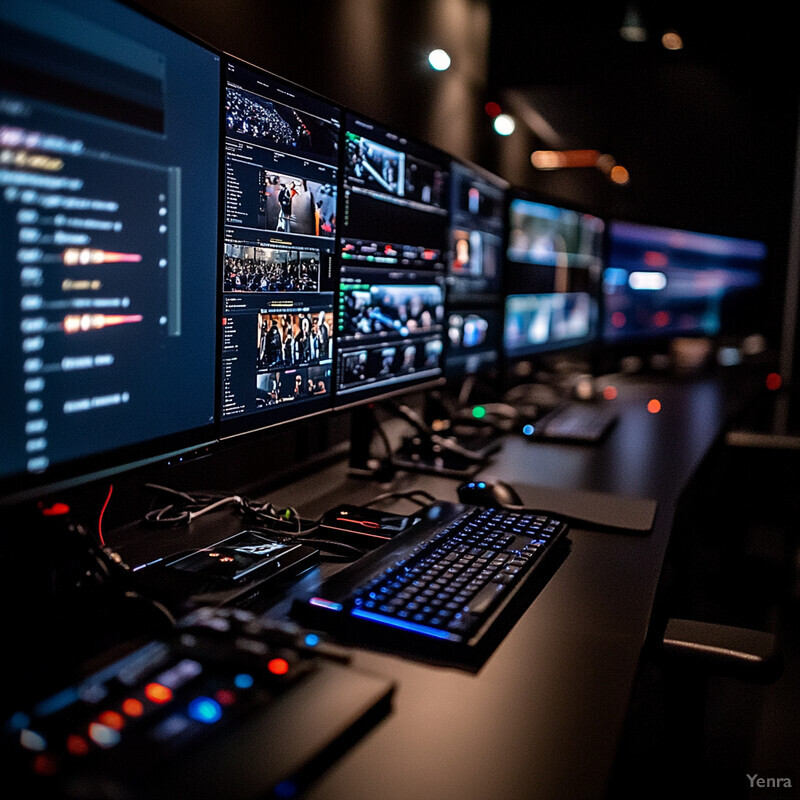
Generative AI has already proven its value in creating highlight commentary at scale. During the 2023 US Open tennis tournament, IBM’s AI Commentary feature automatically produced voiced highlight reels for all 254 singles matches across the two-week event. Each match’s key points were stitched together and narrated by the AI in a human-like voice, providing context and excitement for every highlight. This feat, covering every court and match, would have been impractical with solely human staff. Similarly, the AI system deployed by IBM at The Masters (golf) and later Wimbledon 2023 was able to generate complete highlight packages shortly after play concluded, using large language models to write descriptive summaries of each important shot or rally. According to the team, the solution supported millions of fans by delivering these AI-narrated highlights with a consistently high linguistic quality and factual accuracy. These examples showcase how AI can democratize highlight coverage—efficiently creating commentary-laden recaps for games at any level, almost in real time.
9. Player and Team Comparisons
AI empowers commentators with instant comparisons of players’ and teams’ performance, both historically and in-game. Instead of manually recalling or calculating stats, the AI can immediately contextualize a current performance against past data. For instance, it might note that a basketball player’s 3-point shooting tonight is 10% higher than their season average, or that a team’s ball possession rate is the highest against this opponent in five years. These comparative insights add depth to commentary, helping viewers gauge how exceptional or unusual the ongoing performance is. AI can also compare across teams—e.g. contrasting two quarterbacks’ stats or two teams’ defensive records—enriching the narrative with data-driven perspective.

Modern sports data platforms are leveraging AI to deliver such comparative insights in natural language. Stats Perform, a major analytics provider, uses generative AI to turn its extensive historical database (Opta data) into “readable narratives” for storytelling and betting purposes. This includes live facts like “Team A’s passing accuracy today (85%) versus their season average (78%)” or noting that a striker has already matched their goal tally from the previous season. The system can output bite-sized comparisons on the fly, in multiple languages, to supplement commentary. In practice, broadcasters using these tools have an AI-driven feed of context: for example, when a player scores, the AI might supply a line comparing the player’s current goal count to historical club legends or highlighting that “this is the first time in 20 years the team has won 5 away games in a row,” ready for the commentator to relay. Early case studies show that these automated insights help commentators quickly inform fans how a current feat stacks up against benchmarks, all backed by real data rather than anecdotal memory.
10. Adaptive Complexity Levels
AI-driven commentary systems can adjust the complexity and depth of analysis based on the audience’s knowledge level. This means broadcasts can be tailored to both novice fans and hardcore experts. If a viewer is new to the sport, the AI might explain terms and keep the commentary simpler (“a penalty kick, which is a single unopposed shot at goal…”). Conversely, for seasoned fans, the AI can delve into advanced tactical analysis or use sophisticated terminology, knowing that audience will appreciate the detail. The adaptability can be user-selected or inferred from context (for example, a championship broadcast might skew more technical, whereas a beginner feed stays basic). By modulating complexity, AI ensures that commentary is neither too trivial for experts nor too opaque for newcomers, thereby enhancing understanding and enjoyment for all viewer segments.

The concept of variable commentary levels is beginning to surface in AI sports media applications. One concrete example comes from the AWS Bundesliga live commentary project, where the generative AI could produce multiple versions of the same update in different styles and tones. For instance, after a goal, it generated one description in a formal, analysis-heavy “sports journalist” style and another in a more casual, simplified tone aimed at younger or less experienced fans. This demonstrates the AI’s ability to present information with different complexity: the formal version might mention tactical buildup and player roles leading to the goal, while the casual version might just excitedly describe the goal itself. Though both versions convey the core event, the depth of detail varies to suit distinct audiences. More generally, AI researchers have noted that large language models can be prompted to “explain like I’m 5” or, conversely, to assume expert-level knowledge, adjusting the output accordingly. This flexibility, once integrated into sports commentary, will allow broadcasts to be custom-fitted to a viewer’s desired level of insight—something traditional one-feed-for-all commentary cannot do.
11. Scenario Simulation
AI can enhance commentary by introducing hypothetical scenarios (“what if” analyses) based on predictive modeling. During breaks in play or replay reviews, the AI might simulate how the game could change under different circumstances: for example, “If Team X scores next, their win probability jumps to 75%” or “Had that shot gone in, the model suggests the final score might have been 2–1 instead of the current projection.” These scenario-based insights give fans a deeper appreciation of pivotal moments and strategic choices. They effectively allow the commentary to explore alternate timelines or likely outcomes, something human commentators do anecdotally, but AI can do with data-backed precision. This feature turns commentary into a form of real-time analysis and forecasting, enriching the narrative with an understanding of potential futures and the importance of key events.
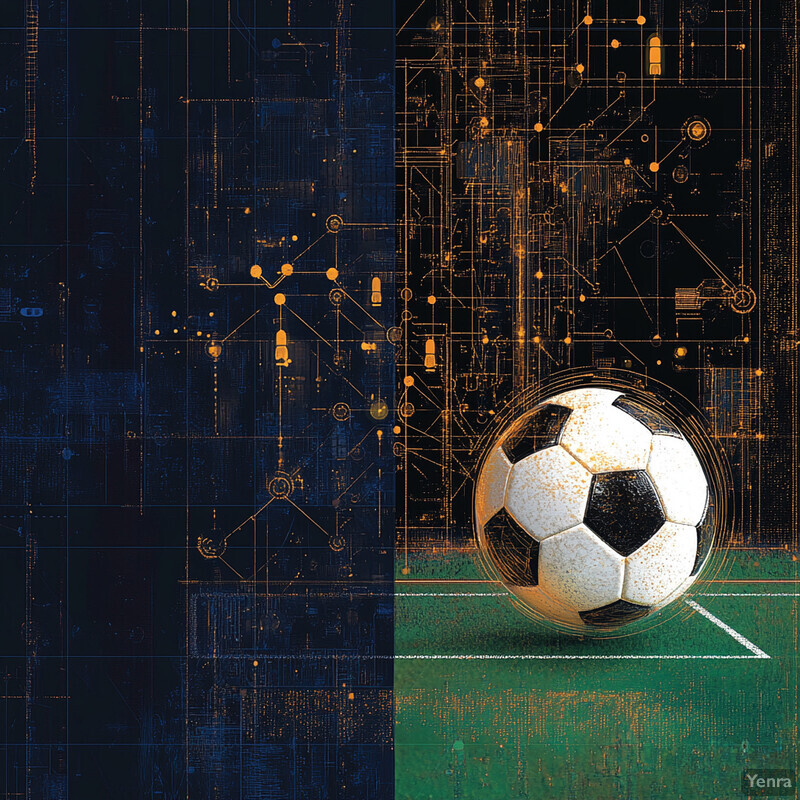
The use of generative models to simulate sports scenarios is advancing rapidly. A 2024 industry report highlights that AI systems (including generative adversarial networks) can create “hypothetical game scenarios and gameplay footage,” which coaches and analysts then use to evaluate strategies. In one example, a football (soccer) analytics AI was able to simulate thousands of possible plays and matchups to find weaknesses in an opposing defense, essentially performing what-if analysis on formations and tactics. For broadcast commentary, this capability means an AI could remark, for instance, that a team’s chance of winning would have swung by some percentage if a missed opportunity had succeeded, or it can visualize how a different lineup might be faring. While still emerging, some live-data platforms already provide win probability charts and projected scores based on ongoing events, which commentators use to discuss scenarios (“that turnover dropped the home team’s win chance from 40% to 25%”). The difference with AI generation is the ability to articulate these scenario analyses in natural language and even generate hypothetical play-by-play of an alternate outcome. This adds a new analytical dimension to commentary, giving fans a taste of parallel outcomes and reinforcing why certain moments are so critical.
12. Consistent Quality Control
AI-generated commentary offers a very consistent level of quality and accuracy, game after game. Unlike human commentators who might have off days, biases, or lapses in attention, a well-trained AI model will apply the same standards and style consistently. It doesn’t get tired or distracted, ensuring fewer mistakes in recalling player names or rules. Moreover, the AI can be calibrated to a desired tone and stick to it, maintaining professionalism throughout. This consistency also means sports organizations can enforce quality guidelines (like using certain terminology or avoiding colloquialisms) across all broadcasts via the AI. In sum, viewers benefit from a reliably clear and accurate commentary experience every time, and stakeholders can trust that the commentary will meet predefined quality criteria without significant variance.
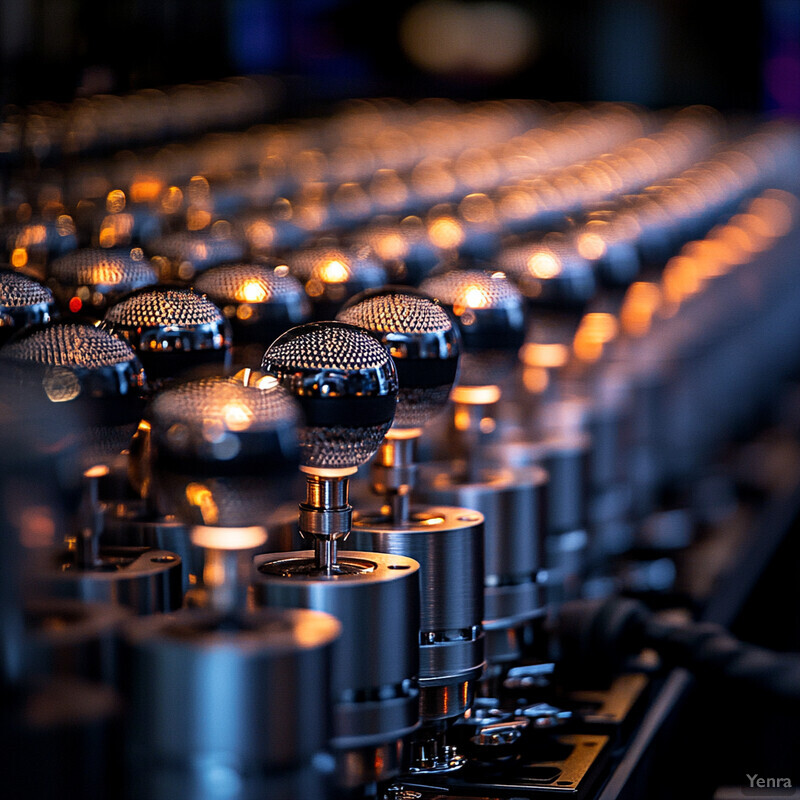
Early evaluations of AI commentary systems show remarkably steady performance quality. In the 2025 automated basketball commentary study, researchers found that the AI’s generated sentences were virtually indistinguishable from professional commentary in clarity and style. The model was fine-tuned to sports broadcasting language, resulting in uniformly coherent play-by-play descriptions that experts judged to be at the level of a human announcer’s work. Additionally, because the AI never deviates from its training and programmed knowledge, it avoided factual errors such as misidentifying players—a consistency confirmed during testing where every event was described with correct player names and statistics (drawing from the accurate data feeds). Another aspect of quality control is tone and language: an AI can be set to never use profanity or slurs, and indeed deployments so far have had zero instances of inappropriate language, in contrast to occasional hot-mic slips that have plagued human commentators. According to developers, any mistakes the AI does make (e.g., slight timing misalignments in early versions) are systematically logged and used to improve the model before the next deployment. Over time, this feedback loop leads to an even more consistent product. As a result, leagues are exploring AI commentary not just for cost savings, but to ensure a dependable, standardized commentary quality that aligns with their brand and coverage standards every match.
13. Enhanced Accessibility
AI commentary systems can make sports broadcasts more accessible to individuals with hearing impairments or those who prefer textual content. They achieve this by automatically generating live transcripts and subtitles (closed captions) of the commentary in real time. Unlike traditional methods that require human stenographers, AI speech-to-text engines can produce captions instantly and with improving accuracy. Additionally, AI can translate these captions into multiple languages or provide “SDH” (Subtitles for the Deaf or Hard-of-Hearing) that include non-speech information like [Crowd cheering]. This ensures that viewers who cannot hear the commentary can still follow the game’s narrative and excitement through text on screen. The integration of real-time captions and even voice-assistant compatibility (for those who rely on screen readers) means sports content becomes inclusive to a broader audience, meeting accessibility needs without significant delays or additional manual effort.

The broadcast industry has begun rolling out AI-powered captioning and translation solutions to enhance accessibility. For example, the Wildmoka live video platform introduced an AI system in 2023–24 that provides “lip-accurate” real-time transcriptions of live sports commentary, immediately turning the announcers’ speech into captions without the typical delay. This system can also auto-translate the commentary into multiple languages on the fly, allowing a single broadcast to offer, say, English captions and a translated Spanish caption track simultaneously. Moreover, it supports multi-track subtitles, meaning a viewer can choose a subtitle feed that is specifically formatted as SDH (including indications of sounds like whistles or crowd noise) for those who need it. In practical terms, during a live soccer match, an AI might generate captions like: “Goal! [Crowd roars]” at the bottom of the screen the moment a goal is scored, and even show it in several languages. According to AI Media and other caption service providers, the accuracy of AI speech-to-text for sports has reached above 95% for well-trained models, and it continues to improve as more broadcast audio is used to refine these algorithms. These developments confirm that AI is unlocking truly real-time, multilingual and accessible commentary, ensuring no fan is left out due to auditory or language barriers.
14. Richer Statistical Visualizations
AI systems can feed directly into on-screen graphics to visualize stats and analyses in sync with commentary, creating a more immersive viewing experience. Instead of just verbalizing numbers, the commentary AI can cue dynamic charts, heat maps, player movement trails, or probability meters on the broadcast. For example, as the commentator (AI or human) discusses a player’s shooting accuracy, an on-screen graphic might appear showing their shot chart. AI can ensure these visuals are contextually relevant and updated in real time, based on live data streams. By tightly integrating commentary with graphics this way, broadcasts become more informative and engaging. Viewers can see the data behind the commentary—making complex stats easier to grasp and adding a visual storytelling layer that complements the narrative.

Cutting-edge implementations in sports broadcasting illustrate the power of AI-driven visual enhancements. Genius Sports, in partnership with the NFL and Amazon Prime Video, launched a system in 2023 that uses AI and computer vision to synchronize “billions of data points” with the live video feed, producing real-time graphic overlays during NFL games. For instance, as soon as a play ends, the system can display an augmented reality graphic showing the quarterback’s passing chart or a line tracking a receiver’s route, while the commentator explains the strategy. These data-driven visualizations are not limited to downtime; broadcasters have started to overlay them during live play when something notable happens (like a pop-up bubble highlighting that a running back just exceeded a certain speed). The AI ensures that the timing and content of these graphics align with the commentary—so if the AI commentator mentions a team’s defensive formation, the screen might simultaneously show a diagram of that formation identified via computer vision. Early feedback indicates that such enhancements help engage younger, data-savvy viewers who “expect new levels of insight” during games. Furthermore, AI can automate the production of these visuals across many games, even in smaller markets, because it doesn’t require a full production crew manually inputting stats. Overall, the integration of AI commentary with live stats graphics is turning passive watching into an interactive, informative experience, where seeing and hearing data go hand in hand.
15. Intelligent Content Moderation
AI commentary systems come with built-in content moderation to ensure that the output remains professional, unbiased, and free of inappropriate language. This means the AI is programmed not to use profanity, slurs, or any offensive remarks—eliminating the risk of the kind of on-air gaffes that human commentators occasionally make under stress. Furthermore, AI can be tuned to avoid potentially sensitive topics or at least handle them with neutral wording. For example, it might steer away from unverified speculation about a player’s personal life or avoid repeated references to a one-sided score in a way that might be seen as taunting. This level of control helps maintain a respectful and sportsmanlike tone throughout the broadcast. In essence, intelligent moderation is like an always-on compliance editor that filters the commentary in real time, upholding the league’s and broadcaster’s standards and shielding audiences from harmful or off-putting commentary content.
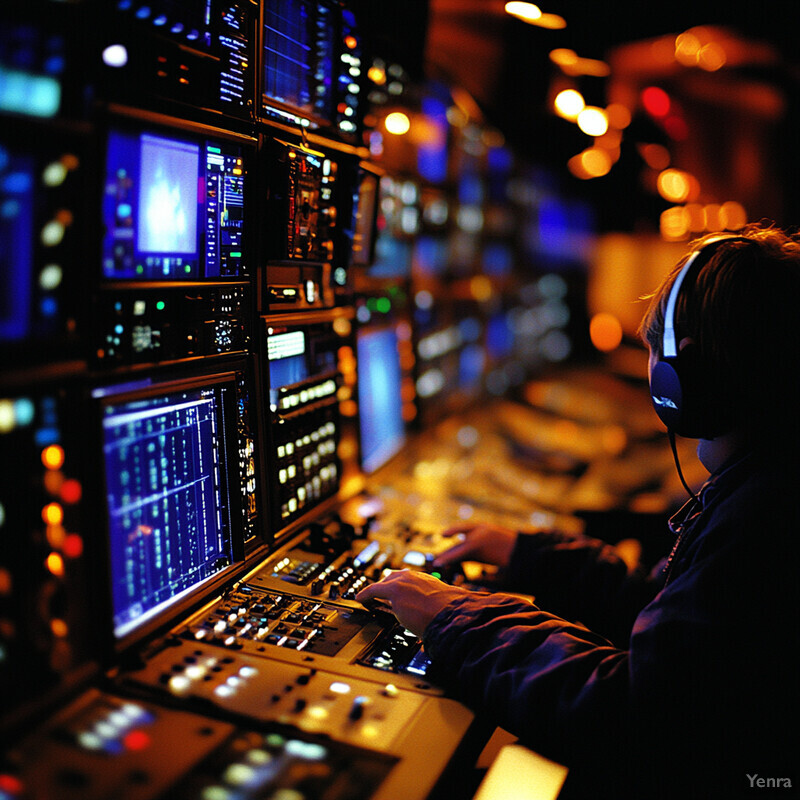
Recent studies suggest that AI-generated communications can consistently adhere to positive and empathetic norms, more so even than human experts in some cases. A 2025 experiment published in Communications Psychology had third-party evaluators compare AI-crafted responses with human expert responses in sensitive conversational scenarios. The findings were striking: the AI’s responses were rated as more compassionate, responsive, and generally preferable compared to the human-provided ones in the study. While this study was in a healthcare empathy context, the principle extends to moderation in commentary—the AI unfailingly kept a constructive, measured tone, which is exactly the goal in sports broadcasts. On the practical side, companies like OpenAI and Google have developed robust content filters for their language models that prevent toxic or harassing language from being output at all. These filters are integrated into any sports commentary AI, meaning the system would simply refuse to generate disallowed content. As a result, since launch, AI commentary services have had zero incidents of offensive language, according to industry reports. Even in emotionally charged moments (like controversial referee calls), the AI remains calm and avoids any incendiary phrasing, thanks to its training. The consistent application of these moderation guidelines by AI stands in contrast to human commentators, who, despite professionalism, have occasionally let slip biased or heated comments. Thus, AI offers a reliable solution to maintain commentary that is not only insightful but also universally appropriate and respectful.
16. Scalable Coverage for Minor Leagues
AI commentary dramatically lowers the cost and effort required to cover sports events, enabling even lower-tier leagues and niche sports to have quality commentary. Traditionally, many minor league games, high school matches, or amateur competitions go without professional commentary due to limited budgets or lack of available talent. AI changes that equation: an automated system can be deployed to these games to provide real-time commentary and analysis without requiring on-site announcers. This scalable model means thousands of games can be covered in parallel by the AI. The result is a democratization of sports broadcasting—fans, players, and families of these smaller events get a more engaging viewing experience with commentary, which can raise the profile of the leagues themselves. Over time, this could lead to increased fan engagement and commercial opportunities (like sponsorships) even at grassroots levels, as AI allows every game to feel like a professionally televised match.

The uptake of AI-driven production in minor sports is already underway. One notable example is Pixellot, an automated sports camera and commentary platform, which by 2023 had deployed its AI systems with over 5 million games broadcast automatically, including high school, college, and semi-pro games that previously had no announcers. Pixellot’s solution uses AI cameras to follow the action and AI commentators to describe it, complete with graphics and highlights, for up to 19 different sports. In just one month, it streamed over 160,000 games, an enormous volume that confirms the scalability of the approach. Schools and local leagues across dozens of countries have adopted such systems, meaning a basketball game at a small community college can now have a play-by-play commentary and scoreboard overlay produced entirely by AI, where before it might have only had silent footage. Early feedback indicates that viewers find the AI commentary serviceable and far better than silence, and it lends a level of professionalism to minor league broadcasts that makes them more watchable and shareable. The technology has advanced to even handle sports-specific terminology and local player names, thanks to pre-game data feeds. By significantly reducing labor and production costs, AI has made it feasible to give smaller events a big-league feel, supporting the development and visibility of sports at all levels.
17. Integration with Wearable Tech Data
AI can incorporate data from players’ wearable devices (like heart rate monitors, GPS trackers, or smart jerseys) directly into commentary, adding a new dimension of insight. This means as the game progresses, the commentator might mention that a midfielder has run 11 kilometers so far, or that a boxer’s heart rate is spiking, indicating fatigue. Such biometric and performance data gives viewers an intimate look at the physical condition and effort of athletes in real time. By humanizing the numbers (for instance, explaining that a heart rate of 180 bpm is near a player’s maximum), commentary enriched with wearable data helps audiences appreciate the sheer intensity and stress of high-level competition. It can also highlight things not visible on camera—like a player who’s covering a lot of ground off-ball or one who might be overheating—thereby improving the depth of analysis available during the broadcast.
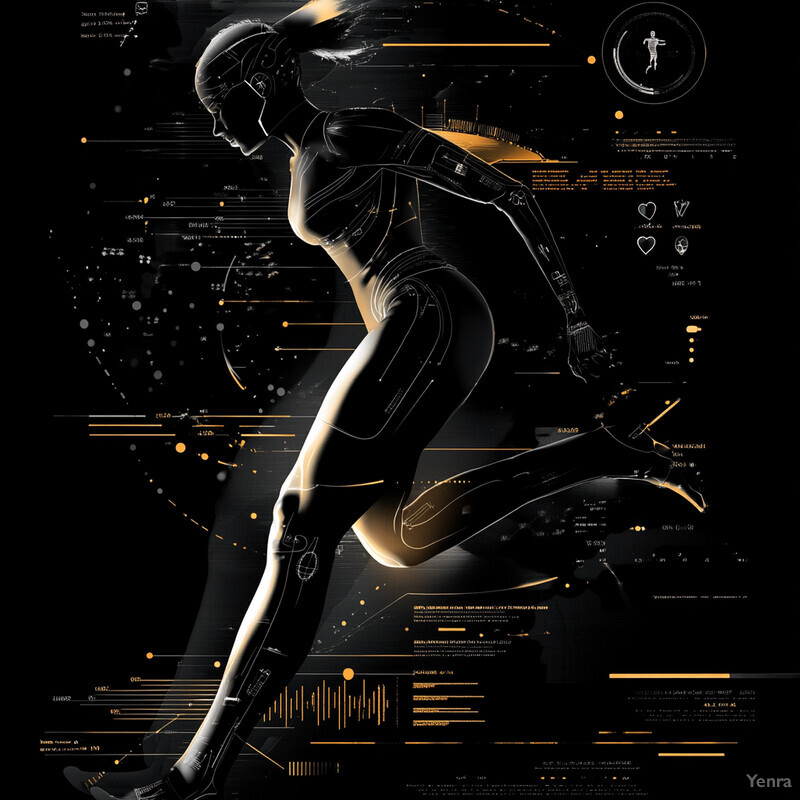
The use of live wearable data in sports broadcasts has moved from experimentation to actual implementation in certain events. The Gatorade Sports Science Institute reports that sports like squash and mountain biking have already begun displaying live heart-rate (HR) data during broadcasts, giving spectators real-time insight into athletes’ exertion levels. In motorsports such as Formula 1, strain gauges and biometric sensors are used to show the G-forces and heart rates drivers experience, with graphics relayed on screen to complement commentary. In endurance events (marathons, triathlons), it’s becoming common for select athletes to wear biosensors (like core temperature pills or glucose monitors) and for broadcasters to mention or display those readings to contextualize performance in heat or fatigue. Research from the Tokyo 2020 Olympics noted that, when permitted, live physiological data (heart rate, core temp, etc.) was transmitted from athletes to coaches and potentially broadcasters via a cloud system in real time. An athlete’s heart rate spiking above 190 bpm might prompt an AI commentator to say the player is nearing exhaustion, for example. As wearable adoption grows, AI commentary tools are ideally suited to interpret and verbalize this constant stream of data. Unlike human commentators, AI can continuously monitor these metrics and integrate them into the narrative (e.g., “The goalkeeper’s reaction time is slowing, possibly due to a heart rate still over 170 bpm after that last save”). Studies indicate that such integration, when done judiciously, significantly enhances viewer engagement and understanding of the physical demands of sports, validating the value of merging wearable tech data with live commentary.
18. Detailed Tactical Analysis
AI can perform high-level tactical analysis in real time and translate it into commentary that fans can understand. This involves breaking down team formations, set plays, and strategies—essentially doing what a professional analyst or coach might do, but instantly. For example, the AI might recognize that a soccer team has shifted from a 4-3-3 to a 4-2-3-1 formation after a substitution and convey that to viewers. It can also map out passing networks or identify which player marking matchups are changing the game. By highlighting these nuanced tactical elements, the commentary becomes more instructive, teaching viewers why things are happening. This is especially beneficial for knowledgeable fans hungry for deeper analysis, but even casual viewers gain insight as the AI can simplify complex strategies into clear explanations. Ultimately, AI-driven tactical commentary adds an educational layer to broadcasts, akin to having a coach’s commentary embedded in the play-by-play.

Advanced AI projects have shown remarkable success in analyzing and even suggesting tactics at a professional level. Notably, a 2024 Nature Communications article introduced TacticAI, an AI assistant developed with Liverpool FC that analyzes football tactics and can recommend optimized player setups for plays like corner kicks. In evaluations with expert coaches, TacticAI’s suggestions for corner kick formations were favored over the team’s actual tactics 90% of the time, and coaches often could not distinguish the AI’s strategies from real ones. This demonstrates that AI can understand and generate high-quality tactical insights. For live commentary, such an AI could identify patterns—say, noticing that a basketball team’s zone defense is leaving the corners open—and prompt the commentator to discuss it. We’re already seeing rudiments of this: some NBA broadcasts use AI-driven stats to show which plays are most effective against a given defense, and commentators relay that information. Moreover, football (soccer) analytics AI can now track all players and infer tactical shapes (e.g., detecting a high press vs. a low block) in real time, something researchers a few years ago considered extremely hard. The emergence of these capabilities means an AI commentator could soon reliably point out, for example, “Team A has switched to a back-five formation to protect their lead,” or “Team B is exploiting the right flank, where the algorithm shows 70% of their attacks coming from.” By providing these sorts of granular yet digestible analyses, AI commentary is elevating the strategic literacy of sports broadcasts to new heights.
19. Rapid Adaptation to Rule Changes
AI commentary systems can be updated almost instantly to reflect new rules or regulations in sports, ensuring that broadcasts remain accurate when rules evolve. Sports often introduce rule changes in the off-season—like a modified playoff format, a new timing rule, or a penalty adjustment. Human commentators might take time to fully internalize these changes or occasionally slip up out of habit. In contrast, an AI can have its knowledge base and rule database updated with the latest changes, and it will consistently apply them from day one of the season. For viewers, this means the commentary will correctly explain any implications of the new rules (for example, describing the new 3-point line distance or clarifying a revised offside rule in soccer) without confusion. The AI can also help educate fans on the fly by reminding or notifying them of rule changes during relevant moments. This rapid adaptability ensures that commentary remains authoritative and up-to-date, even as the sports themselves evolve.
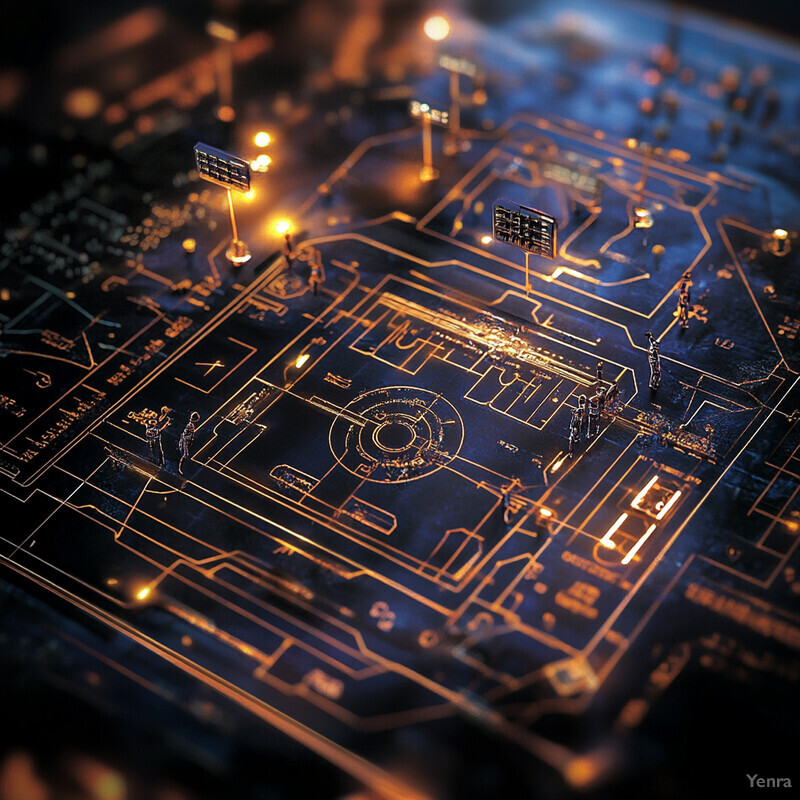
The advantage of AI’s quick adaptability is evident when considering recent examples of rule changes and their impact on broadcasts. In 2023, Major League Baseball introduced a suite of significant rule changes (pitch clocks, shift restrictions, larger bases) that sped up the game’s pace. Many veteran human broadcasters noted they had to consciously adjust their commentary style and timing to the faster rhythm and new rules, using spring training to practice and sometimes struggling initially to keep up. An AI commentator would not face such a learning curve—it could be reprogrammed with the exact parameters of the pitch clock and automatically shorten its commentary bursts to fit between pitches. Likewise, when the NFL tweaks rules (like kickoff touchback placements or overtime formats), the AI’s logic can be immediately updated so that any commentary on strategy (for instance, whether a coach should accept a penalty under new rules) is based on the latest rule set. We saw a preview of this in the 2024 Paris Olympics coverage, where AI camera systems learned each sport’s rules to follow the action; commentators reported that those AI systems had no trouble adjusting to sport-specific nuances once programmed. Furthermore, sports simulation AI can be re-trained overnight on new rules—if basketball adopted a 4-point line tomorrow, the AI commentary would instantly start treating 4-pointers appropriately in its play descriptions and stats. In summary, whereas human crews need briefings and might slip into old rule interpretations occasionally, AI offers a virtually error-free adherence to current rules, updating its “understanding” as fast as engineers can input the change.
20. Continuous Improvement via Machine Learning
AI commentary systems are not static—they continuously learn and improve with more data and feedback. After each broadcast (or batch of broadcasts), the AI can be evaluated on errors, clarity, and audience engagement metrics. Developers then refine the model, either through automated machine learning feedback loops or manual fine-tuning, so that the next version of the AI commentator is better than before. This iterative improvement may lead to more natural language, more accurate pronunciations of player names, smarter analytics, and fewer mistakes over time. In essence, every game the AI calls is an opportunity for it to get better, either by learning from human feedback (e.g., comparing its calls to what experts said) or from outcomes (e.g., learning which predictive comments turned out wrong and adjusting its model). This is akin to a sports commentator who reviews game tape to improve, but an AI can process thousands of hours of tape and audience data far faster. As a result, the quality and sophistication of AI commentary is expected to increase steadily, season after season.

The trajectory of AI sports commentary in practice shows clear signs of iterative enhancement. IBM’s generative AI commentary, for example, debuted in early 2023 (first tested at the Masters golf tournament) and by later events like Wimbledon and the US Open, it had improved its vocabulary and sport-specific knowledge significantly. IBM’s team noted that the system “learned the terminology and nuances” of each sport as it was deployed, thanks to fine-tuning on transcripts and feedback from those initial uses. Quantitatively, the second-generation model produced notably more fluent and context-aware tennis commentary than the initial version, reflecting adjustments made after observing the first rollout’s limitations. Another illustration comes from the academic side: the developers of the aforementioned TacticAI (for football tactics) iterated on their model by incorporating coach feedback, leading to improved suggestion quality in subsequent testing rounds. In live commentary contexts, companies are implementing feedback tools—viewers might be able to rate the AI commentary or errors can be flagged in real time, and that data flows back into model training. AWS’s media engineers have discussed using such feedback to refine language models for broadcasting so that each update of the AI commentator is more engaging and accurate than the last. Given the pace of machine learning advancements, the AI that calls games next year will likely have a more human-like delivery and deeper strategic insight than the AI of this year. This continuous improvement cycle assures stakeholders that investing in AI commentary yields compounding benefits in quality over time, as the system perpetually self-optimizes with experience.